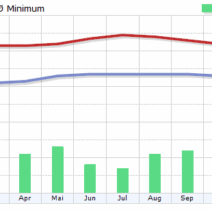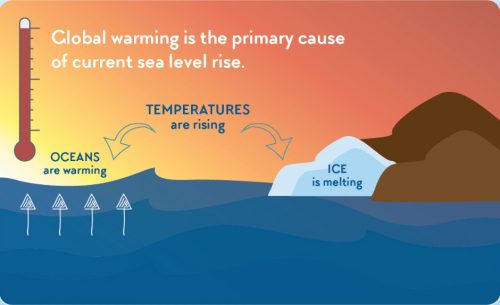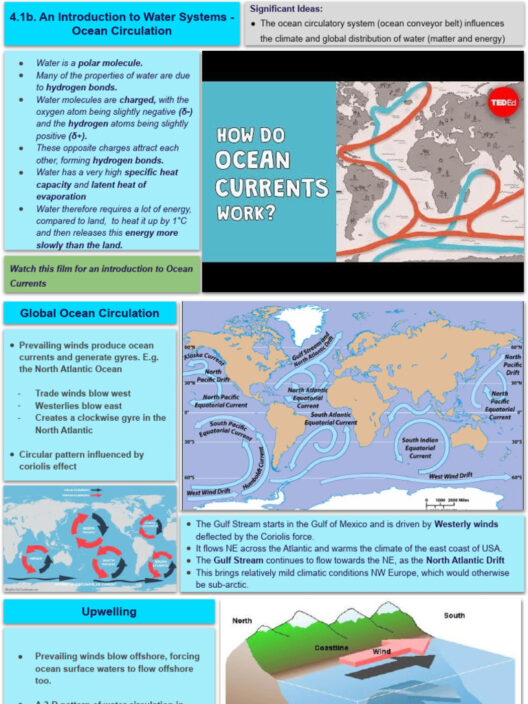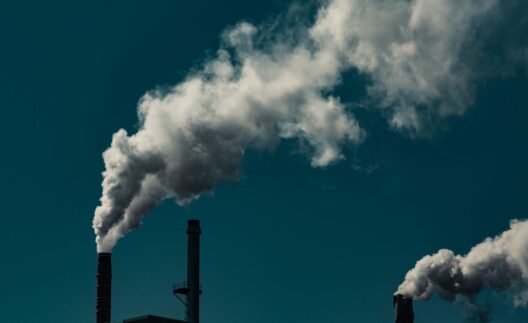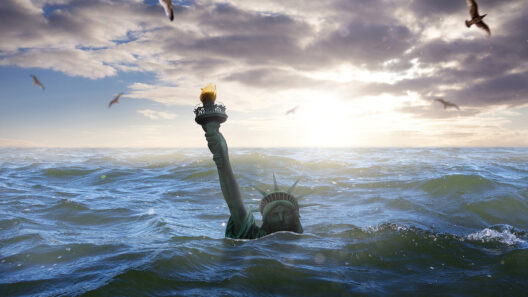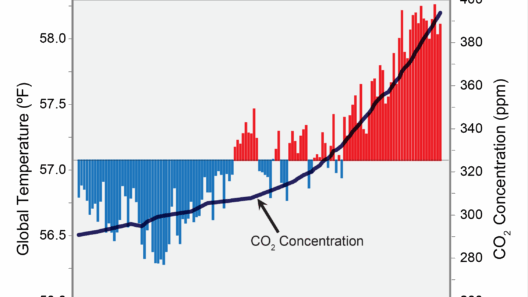Understanding the myriad of factors contributing to sea level rise is crucial in our current epoch of climate change. Global warming, a phenomenon marked by the increasing average temperature of our planet’s atmosphere and oceans, is inextricably linked to sea level dynamics. As we delve into the intricacies of this relationship, we uncover the multifaceted mechanisms behind the rising tides.
At the forefront of this investigation are thermal expansion of seawater and the melting of glaciers and ice sheets. Each of these causes playing a distinct yet interconnected role in reshaping coastlines globally.
Thermal Expansion: The Invisible Culprit
The oceans act as a vast reservoir of heat, absorbing approximately 90% of the excess energy generated by greenhouse gas emissions. This absorption results in thermal expansion — as water warms, its volume increases. The process may seem innocuous, yet it has far-reaching implications. Scientists document a significant rise in sea levels attributed to this thermal phenomenon, with estimates suggesting it accounts for roughly 30% of the observed increase.
As we ponder this consequence, it is vital to acknowledge that the oceans are not uniform; their capacity to expand changes with their geographic and atmospheric conditions. Factors such as salinity and currents interplay with temperature, creating complex patterns that scientists are increasingly attempting to model. Regions near the equator, for example, may witness more pronounced increases than temperate zones due to varying heat retention properties. This non-uniformity emphasizes the complexity of our planet’s systems and the unpredictable nature of climate change impacts.
Melting Ice: The Solid No More
The cryosphere — our planet’s icy regions, including polar ice caps, glaciers, and Greenland’s and Antarctica’s ice sheets — plays a pivotal role in regulating sea levels. The melting of these ice masses is a direct consequence of rising atmospheric temperatures, which have reached unprecedented levels over the past century.
Glacial retreat is most observable in mountainous regions, where towering glaciers that once stood as bastions of ice are gradually receding. As they succumb to warmth, they contribute substantial amounts of freshwater to the oceans, further exacerbating sea level rise. A study in glaciology shows that these Himalayan glaciers, for instance, are shrinking at an alarming rate. Their loss signifies not just an increase in sea levels but also threatens freshwater supplies for billions who rely on glacial meltwater.
The extensive ice sheets of Greenland and Antarctica merit particular attention. These colossal ice formations house vast volumes of frozen water. Current research indicates that Greenland is losing ice at an alarming rate — a phenomenon characterized by increased ice shelf calving and surface melting. Simultaneously, Antarctica’s West Ice Sheet is experiencing significant destabilization. Should these ice sheets undergo complete melting, projections suggest an increase in global sea levels by as much as several meters, leading to catastrophic implications for coastal communities worldwide.
Global Warming: The Catalyst for Change
Both the thermal expansion of ocean water and the melting of glaciers are intricately tied to the overarching force of global warming. This phenomenon arises predominantly from anthropogenic influences, primarily the burning of fossil fuels, deforestation, and industrial activities. The resultant emission of greenhouse gases leads to increased atmospheric temperatures, shifting the delicate balance of our climate system.
By examining carbon dioxide and methane levels over the past century, we recognize alarming trends. These gases not only contribute to warming but also drive a cascade of effects, including altered weather patterns, intensified storms, and changes in oceanic currents. Each of these outcomes can influence sea levels, creating a feedback loop that compounds the effects of climate change.
The Role of Ocean Currents
Ocean currents, often overlooked in discussions of sea level rise, also significantly influence sea levels. While they regulate temperatures across vast expanses, alterations in these currents due to temperature rises can lead to shifts in sea level distribution. For instance, the Atlantic Meridional Overturning Circulation (AMOC) plays a critical role in the North Atlantic’s heat distribution. A slowdown in this current, linked to global warming, could lead to localized sea-level rise along the Eastern Seaboard of the United States, despite overall global averages remaining stable.
Future Projections: The Long-Term Outlook
As we gaze into the crystal ball of climate science, projections regarding sea level rise vary widely, painting a landscape of uncertainty. Estimates indicate that by the year 2100, global sea levels may rise between 0.3 to over 2 meters, depending on various factors, including future emissions and the responsiveness of ice sheets. The implications are daunting — low-lying nations may become uninhabitable, leading to ecological displacement of millions.
Communities along coastlines must prepare for substantial adaptation challenges. Infrastructure will require fortification, and innovative strategies must be developed to manage water intrusion and the erosion of shorelines. As the natural world grapples with this impending reality, there is an urgent need for collective action to mitigate climate change impacts.
In conclusion, the connection between global warming and rising sea levels is not just a scientific inquiry but a clarion call for action. Understanding these dynamics is critical for fostering awareness and driving policy changes that can mitigate the risks of a warming planet. The tides are rising, and our responses must evolve to meet the challenges of a changing world.


